Written by: Bankrate Staff |
Millennials (individuals born between 1981 and 1996) number 83.2 million and are characteristically known as the largest, best-educated and most diverse generation in U.S. history. However, saving for retirement, budgeting and establishing and maintaining a financial plan remains a challenge for millennials, according to the National Institute on Retirement Security.
Nearly half of all millennials are already concerned about their ability to retire when they choose and two-thirds are concerned about outliving their retirement savings. Crushing student loan debt has also crippled this generation’s ability to invest.
Millennials’ slower start to investing can also be attributed to watching their parents go through the Great Recession of the late 2000s and early 2010s. They may be more wary of the stock market, which can inhibit their willingness to take risks.
In fact, three in 10 millennials say cash is their favorite long-term investment, but a third of Gen Xers, 38 percent of baby boomers and 44 percent of the Silent Generation invest in stocks. Millennials have traditionally preferred saving their money rather than investing and view savings accounts as a safer bet than the stock market.
If you’re a millennial, Bankrate’s guide can help you determine why it’s important for you to invite risk, how to determine your investment goals and how to get started in the stock market.
Why should millennials invest?
Because they witnessed the Recession, you may perceive investing as risky, but not investing is actually riskier. “The worst thing you can do in your mid-twenties to mid-thirties is not saving money and invest. If you invest money early on, it gives your money a long time to grow,” says Mike Kerins, founder and CEO of RobustWealth. He says that in spite of the ups and downs of the market, it’s rare that the stock market stays down for a long period of time.
Stock investments deliver bigger returns over cash and bonds in the long run. Money sitting in savings accounts is stagnant and subject to rising inflation, whereas stock market investments can compound over the years. More specifically, large-capitalization stocks returned 10% compounded annually from 1926-2018. Over that same time period, long-term government bonds returned only 5.5% annually and T-bills returned 3.3% annually.
“The surest way to build wealth over long time horizons is to invest in a diversified portfolio of common stocks,” says Robert Johnson, professor of finance at Creighton University and chairman and CEO of Economic Index Associates.
The other advantage of saving money over time is that it’s like a snowball effect. “Millennials need to begin compounding early and let that compounding work its patient magic over decades,” says Johnson. Compounding means that when you earn interest on your investments, you earn interest on the interest.
For example, if you start investing $6,000 per year when you’re 25 years old, you’ll have a larger return than if you just deposited that money in a savings account or under the mattress.
Evaluate how much you’re able to invest
Just getting started is critical for any young investor. How does a 20-something novice investor with a modest income (who’s also likely making payments on student loans) get into the market in the first place? The first step is to determine your current situation.
Calculate your total debt
Put pen to paper (or get a budget app) and figure out how much money you make per month minus how much you have going out. Consider:
• Rent or house payment
• Student, auto and other monthly loan payments
• Credit card monthly payments
• Other debts or required payments
After you figure out generally how much it costs you to live on a month-to-month basis, you can determine how much extra you have to invest.
Next, determine how you’d like to approach your student loans, credit card debt and any other debt you have. Aim to pay off your high-interest debt first (called the debt avalanche method) or pay off your smallest amount of debt first (debt snowball method). The research shows that it’s much easier to stay motivated when you pay off smaller debts first because you get a quick win right away.
Mike Broker, chief strategy officer at Trilogy Financial, says, “You can start small while paying down large student loan debts or working on other obligations, but start to save for your future now.”
Determine your financial risk level
The Recession may leave some millennials with residual nervousness about the ups and downs of the stock market — but these ups and downs are normal. Consider goals-based investing to specifically invest for specific time horizons. In other words, if you have a short-term goal, such as saving for a house in a few years, you might consider investing more conservatively.
Decide where your investment funds will come from
Where will you pull your extra money for investing? From your savings account? From loose dollars you have in your checking account at the end of the month? What if you have no extra cash for investing and need to come up with an alternative plan? Here are several options for getting started.
Savings
If you have some money stashed in a savings account, you might consider it seed money for your investment accounts. Many companies require you to invest a minimum amount of money to get started. For example, the minimum initial investment for Vanguard Target Retirement Funds is $1,000. A $3,000 minimum applies to most other Vanguard mutual funds.
Set an investing budget
Once you determine how much you have leftover at the end of the month, put that money to work for you directly into an investment account at the end of the month. Amounts might vary per month (the car might inevitably need a new alternator) but at least you have an idea of a general amount to budget toward investing per month.
Educate yourself on stock market basics
Financial lingo can seem intimidating, but as you learn more about stock market basics and stay up to date on financial news, your financial knowledge will grow.
Beginner investing terms you need to know
Check out Bankrate’s full glossary of investing terms, but here are a few must-know-now terms:
Bonds: Bonds are loans made to large organizations, including corporations, cities and national governments. The interest payment (called the coupon) is what bondholders earn for loaning their funds to the issuer.
Brokerage account: An arrangement between an investor and a licensed brokerage firm where the investor can deposit funds with the firm and place investment orders through the brokerage.
ETFs (exchange-traded funds): An ETF is a basket of securities you buy or sell through a brokerage firm on a stock exchange. ETFs are offered on virtually all asset classes ranging from traditional investments to alternative assets like commodities or currencies.
Mutual funds: A mutual fund is a professionally managed investment fund that pools money from many investors to purchase securities.
Stocks: Stocks are securities that represent an ownership share in a company.
Financial news and education
Stay up to date on financial news/general stock market news, which you can find on any major news source. Brokerages such as Fidelity have a ton of free beginner investing resources and educational tools to help get you started on the right track. Do research on your own to determine what might work best for you.
Many millennials are interested in socially responsible investing (SRI), which can blend in investing with socially responsible causes to bring about a positive change. Studies have found that millennials prefer to invest where their money can make an impact. In fact, U.S. Trust found that 76 percent of high net-worth millennial investors have reviewed their assets for SRI impact and Morgan Stanley found millennial investors to be twice as likely as others to invest in companies that incorporate socially responsible practices.
Determine your long-term and short term goals
Short-term and long-term investing both require a different approach to investment goal-setting.
Short-term investment vehicles
Paying off student loans, vacation funds, financing a dream purchase, buying a house — all of these are considered short-term goals. Paying off student loans could also be considered another short-term goal.
If you have a short-term investing goal, consider savings accounts, short-term bond funds, money market accounts or certificates of deposit (CDs).
Savings accounts
Savings accounts are bank accounts that earn a small amount of interest. Marcus by Goldman Sachs Bank is a great place to start, and offers a high-yield savings account with a competitive APY. The best savings account rates will not net you too much interest at all, which is why
they’re ideal for short-term investing. Never invest any funds earmarked for retirement in a savings account.
Short-term bond funds
Short-term bond portfolios typically involve corporate and other investment-grade U.S. fixed-income issues from one to three years. These portfolios are attractive only if you have a short savings horizon because they are less sensitive to interest rates than portfolios with longer durations.
Money market accounts
Money market accounts are a lot like savings accounts. Unlike savings accounts, where your bank or credit union can only loan out your cash, in the case of a money market account, the bank can put your money into low-risk investments such as certificates of deposit or government securities.
Certificates of deposit (CDs)
CDs are money invested for a set period. The issuer pays interest at regular intervals until a specific date of maturity. Once your CD matures, you receive your original investment, plus all of the interest you’ve accumulated during that set period. This is only a good option if you can be sure you won’t need your money before maturity. You’ll have you have to pay a fee in order to withdraw the funds before maturity.
Long-term investment vehicles
It’s fine to have some short-term investments, but millennials should always have some sort of funds invested for long-term goals that you can turn into college funds for future children, a second stream of income and/or retirement.
Some excellent long-term investment vehicles include equity index funds, equity ETFs and mutual funds.
Equity index funds
Compared to bond market index funds, equity index funds can offer more risk (which is what you want when you have a longer time horizon). Your returns are higher compared to a bond market index fund, and equity index funds offer you the advantage of a hands-off, diversified, low-cost method of long-term investing.
Equity ETFs
Equity ETFs track an index and usually offer low expense ratios. You can also buy a basket of investments in a single fund, which offers ample diversification. They trade like a stock and are higher risk compared to a bond market ETF, ideal for long-term investing.
Mutual funds
Mutual funds deliver diversification, a distinct advantage compared to choosing individual stocks (a much riskier approach). A disadvantage of mutual funds is that they’re typically more expensive to manage over the long-term because they’re professionally managed.
Investing for retirement
More than any other generation, millennials are interested in work/life balance, saving and retiring early. You don’t need to work for an employer to invest for retirement, but if you do work for an employer, Kerins says it’s important to take advantage of your company match.
In order to take advantage of the company match, you must put in a specified amount of money into your company’s retirement fund. Under current regulations, an employee may contribute up to $19,000 of pre-tax earnings to an employer-sponsored 401(k) plan ($25,000 if you’re age 50 or older).
If you want to invest outside of your company’s 401(k) match, or your company doesn’t offer a 401(k), open an IRA. A traditional or Roth IRA are good choices. For 2019, your total contributions to all traditional and Roth IRAs cannot be more than $6,000 ($7,000 if you’re age 50 or older) or your taxable compensation for the year, if your compensation was less than this dollar limit.
How to get started in the stock market
It’s possible to go it alone or get help from a financial advisor or through other methods, but you can also go the DIY route and open investment accounts with a low-cost provider like TD Ameritrade, Fidelity, Charles Schwab or Vanguard.
DIY options
Broker says, “As a generation, millennials mostly like to be hands-off and make things automated, so send money to your savings account, Roth IRA or whatever vehicle is right for you automatically every month.”
For millennials who want to do the research and/or choose their investments completely solo, certain brokerage accounts are geared toward beginning investors, such as Robinhood or Fidelity. Monitor your portfolio to make sure you’re on track with your investment goals.
Guided investing
If you’d like guidance in building your investment portfolio, consider using robo-advisors. Robo-advisors are investment management companies that rely on computers rather than human beings to help you choose your investments. (Though some robo-advisors do allow you to talk to actual financial advisors.) Robo-advisors ask questions about accepted risk level, time horizon and overall financial goals to give you the best asset allocation possible and rebalance your portfolio over time.
The most important thing to remember? Just get started. With time on your side, Johnson says you have so many options at your disposal. “Time is the greatest ally of young investors because of the magic of compound interest,” he says.



